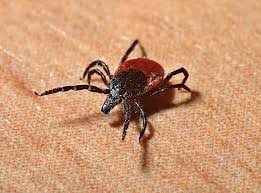The risk of being bitten by a tick and developing Lyme disease depends on many factors such as: geographic location, season, type of tick, and how long the tick has been attached to the skin.
Because the tick that transmits Lyme disease usually feeds more than 36 hours before transmitting the spirochete, the risk of contracting Lyme disease from an observed tick bite, for example, is only 1 to 3 percent, even in areas where the disease is present . However, the risk is significantly higher if the tick has been feeding for 72 hours.
The correct way to remove a tick is to grasp the tick as close to the skin as possible. Then gently pull it back, being careful not to damage the tick. If some parts of the tick remain in the skin, they will be removed by themselves.
If a person is bitten by a type of tick that carries Lyme disease, one of two approaches is recommended:
- Prevention and treatment if signs or symptoms of infection occur
- Treat immediately with a preventive antibiotic.
If a person who is afraid of contracting Lyme disease consults a doctor, the doctor assesses whether preventive antibiotic treatment is necessary







